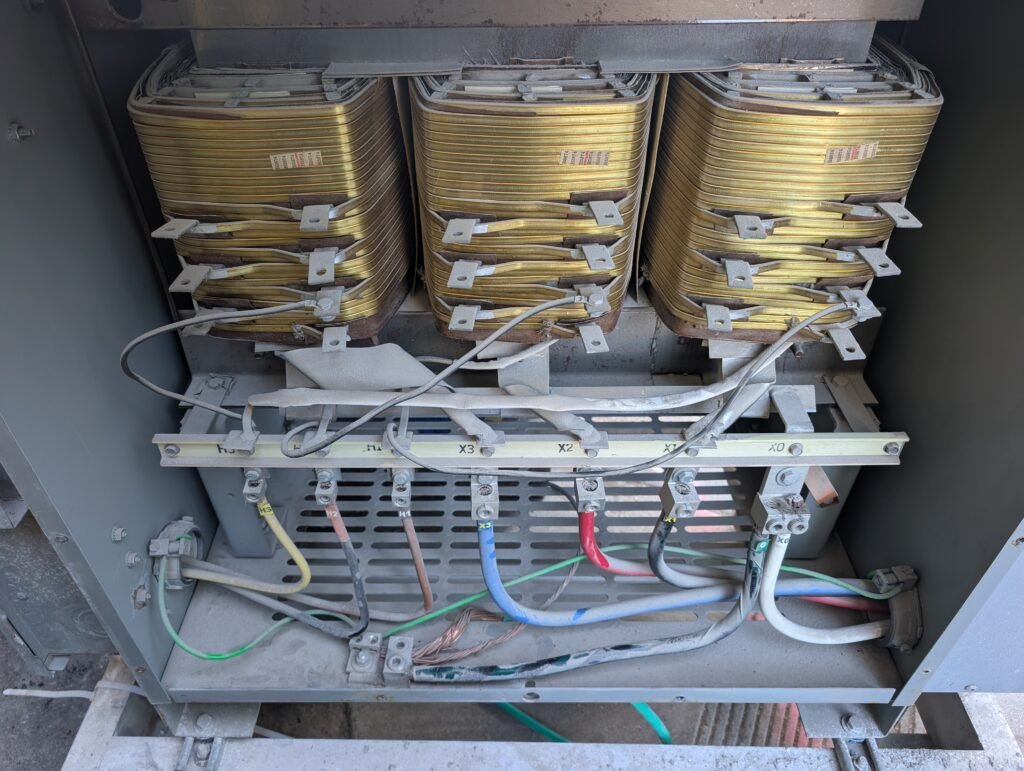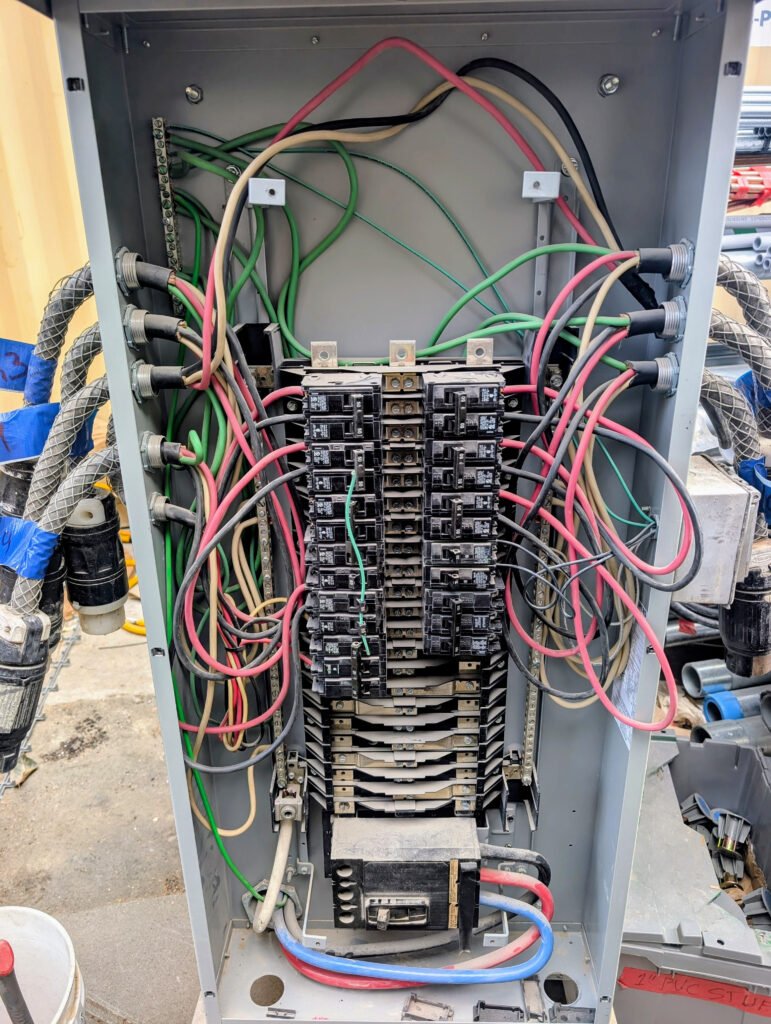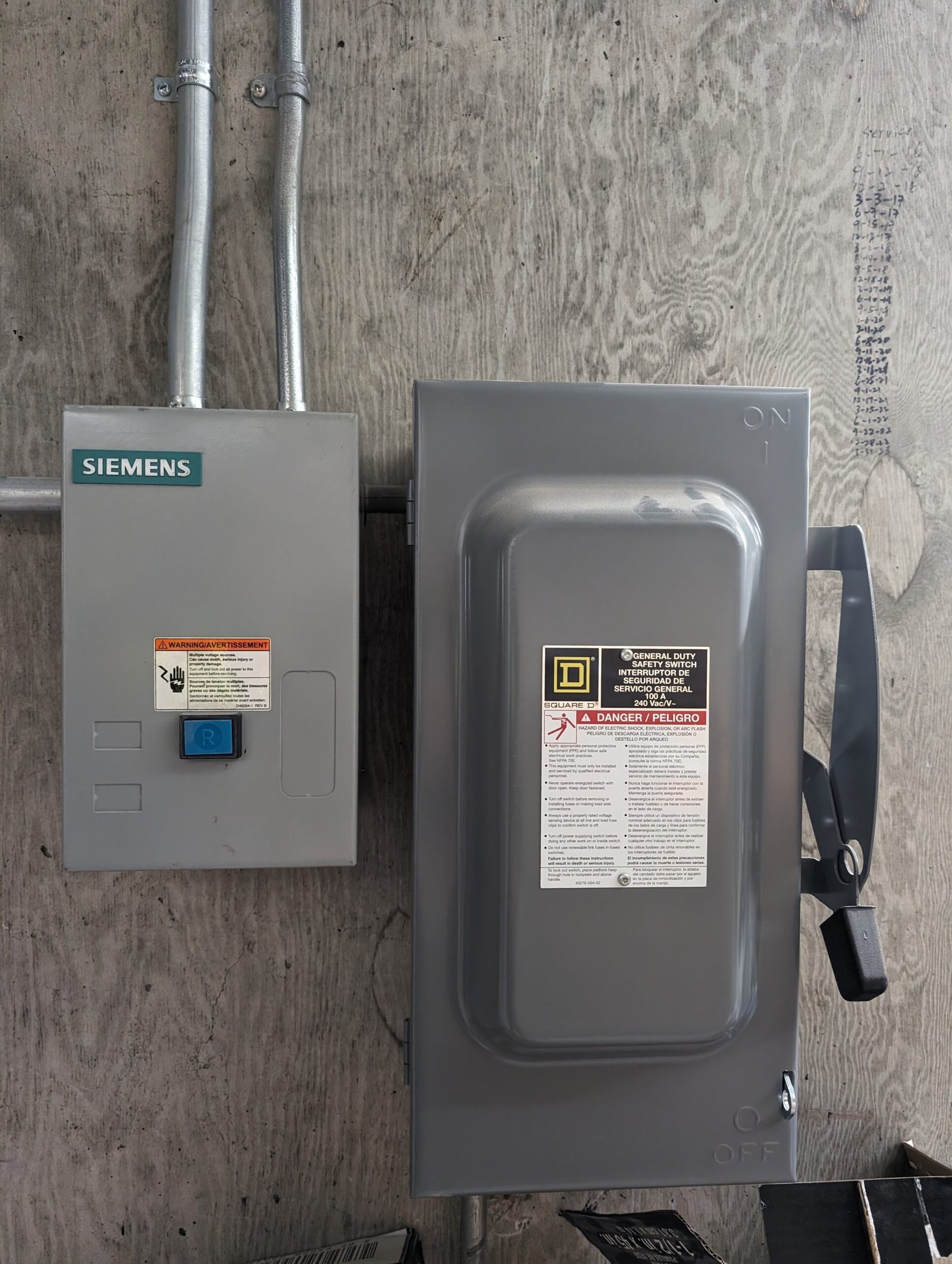Chances are you will need to wire up a 75 KVA, delta-wye transformer skid in order to provide temporary power to the construction site. When the shop drops off the skid, take a minute to inspect and ensure the transformer is in good condition.
With your continuity tester:
- Confirm that there isn’t any continuity between the three ‘H’ and four ‘X’ terminals.
- Confirm that there isn’t any continuity between the three ‘H’ terminals and ground.

On the primary (delta) side of a delta-wye transformer, there should not be continuity between any of the primary terminals (H1, H2, H3) and ground under normal operating conditions.
Here’s why:
- Delta Connections: In a delta-connected system, the three windings are connected in a closed loop, forming a triangle. There is no neutral point or direct connection to ground within the primary winding itself.
- Isolation: The primary and secondary windings of a transformer are electrically isolated from each other. The transfer of energy occurs through electromagnetic induction. Therefore, there should be no conductive path (continuity) between the primary windings and the secondary windings or ground.
- Grounding Practices: Grounding on the primary side of a delta-wye transformer, if present, is typically for safety reasons (e.g., grounding the transformer case) and is a separate connection from the primary windings themselves. The purpose of this grounding is to provide a path for fault currents to flow to the earth, tripping protective devices like circuit breakers or fuses in case of a fault within the transformer.
A problem could be identified before energization if:
- There is continuity between H1, H2, or H3: This would indicate a short circuit within the primary winding.
- There is continuity between any primary terminal (H1, H2, of H3) and the transformer case or ground: This would indicate a ground fault in the primary winding’s insulation.
- There is continuity between any primary terminal (H1, H2, or H3) and any secondary terminal (X1, X2, X3, X0): This would indicate a fault in the insulation between the primary and secondary windings, which is a serious safety hazard.
Remember, a healthy delta-connected primary winding of a transformer should show continuity between its own terminals (eg., H1 to H2, H2 to H3, H3 to H1) indicating the continuous windings, but no continuity between any primary terminal and ground.
On the secondary side of a delta-wye transformer, the X1 terminal should show continuity to ground if and only if the neutral point (X0) of the wye connection is bonded to ground and in most installations it should be.
Here is a breakdown of why:
- Wye Connection: In a wye-connected secondary, the ends of the three windings are connected at a common point, which is designated as the neutral (X0).
- Grounding the Neutral: For safety and to provide a stable reference point, it is common practice to ground this neutral point (X0). This creates a grounded system on the secondary side.
- Continuity Check: If the neutral point (X0) is bonded to the ground, then any of the three phase terminals (X1, X2, X3) will show continuity to ground because they are all connected to the neutral through the transformer windings, which have low resistance.
Remember, if the secondary neutral (X0) is grounded: You should see continuity between X1 and ground (and also between X2/X3 and ground). This is normal and expected.

Important considerations:
- Continuity v. Short Circuit: While continuity indicates a low-resistance path, it doesn’t necessarily mean a short circuit. The transformer windings have a specific low resistance. A dead short would typically indicate a much lower resistance than the winding resistance.
- Bonding Location: The neutral-to-ground bond should typically occur at one point on the secondary side, often at the transformer itself or at the first point of distribution (eg., the main panel).
I like to vacuum the inside of transformer skids because they get really dusty. Never use compressed air to clean the inside of transformer skid, you could inadvertently blow a foreign particle and create a short circuit or ground fault.
Here is a picture of the primary side 480V disconnect.

And here is a picture of the secondary 208V side disconnect.

Hope this helps the next time you’re wiring up a skid.
Stay Safe, Buddy


